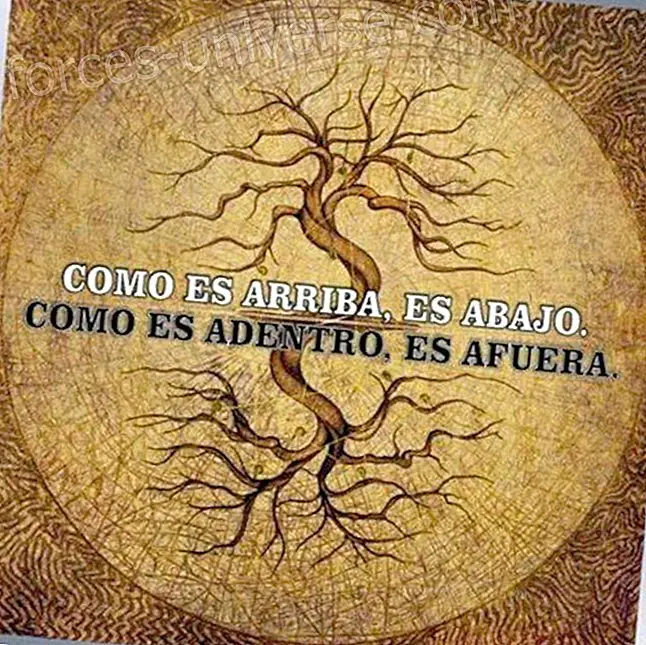
Scientist, philosopher and theologian. A bright man. Known as the "universal genius", "poly mathematician", "man of the Renaissance", advanced for his time. Designer of a submarine before it existed; psychologist 140 years before Freud; aeronautical engineer 190 years before the Wright brothers; Mathematician, geologist, metallurgist, mineralogist, crystallographer, anatomist, botanist, chemist, physicist, cosmologist, astronomer, author, inventor, legislator, mining engineer, economist, editor, poet and musician.
The life of Emanuel Swedenborg (1688-1772) was immersed in the rational world of physical sciences and a deep Christian faith. He lived during the height of the Enlightenment, a period in which intellectuals rejected dogmatic religious teachings in favor of science and reason; and his theology reflects precisely a long struggle to understand the spirit world through the investigation of the physical world. That fight was resolved when (as he described it) his spiritual senses opened and he began to interact directly with the "inhabitants" of heaven, hell and the spirit world among them. Although his theological writings are based on experiences and visions that may seem incredible to a modern audience - as they did with many of Swedenborg's contemporaries - he writes with full awareness of how difficult his explanations can be accepted. In keeping with his early academic training, he presents his ideas in a logical order, drawing examples of everyday life as proof of the truth of his words, inviting readers to judge for themselves.
First years
Born in Stockholm, Sweden (1688), he was the second son of Jesper Swedberg, a pastor of a Lutheran state church in Sweden. At the age of eleven, Emanuel entered Uppsala University, where his father was a professor. He left the university to become a bishop of Skara a few years later, while Emanuel remained in Uppsala finishing his studies in 1709. It was customary for Swedish rich young men of his time to travel abroad to expand what they had learned. His first destination was England, a world center of learning and a great maritime power, where he studied the observation techniques of astronomer John Flamsteed and traveled in the same intellectual circles of luminaries as Isaac Newton and Edmund Halley. Emanuel also studied geology, botany, zoology and mechanical sciences under a number of academics, inventors and mechanics, continuing those studies in Amsterdam and Paris.
When he returned to Sweden five years later, he worked as an assistant to the Swedish inventor Christopher Polhem. As a result of the association, Emanuel was introduced to King Charles XII of Sweden, who was impressed with Emanuel's intellect and provided him with a position in the Mining Council. This position was suitable for him, not only because of the family's connections to the mining industry, but because it gave him ample opportunities for scientific research. After the death of Carlos XII in 1718, his sister Ulrika Eleonora, ascended to the throne. In 1719, the Swedberg family became ennobled, changing its name to Swedenborg, the name by which Emanuel is known today.
Scientific investigation
During this first period, most of Swedenborg's intellectual energy was channeled to scientific and technical work. In the years after his return to Sweden, he published a scientific journal entitled Daedalus Hyperboreus . Although the magazine sought to highlight Polhem's achievements, it also included a series of ideas and inventions of Swedenborg, including plans for a flying machine. From this magazine, chemistry and physics books emerged, as well as the first Swedish book on algebra.
Swedenborg's first major publication was Opera Philosophica et Mineralia (Philosophical and Metalwork), a set of three volumes. This work was written in Latin and published abroad for distribution to an international public. While the second and third volume - one on iron and the other on copper and brass - attracted attention for its technical information on metallurgy, which was the first volume, entitled Rerum Principle Naturalium (Basic Principles of Nature), which laid the philosophical foundations of Swedenborg's subsequent research on the nature of the soul .
The philosophical and metal works were followed by a series of books on anatomy. The first of them of two volumes, Oeconomia Regni Animalis (Dynamic of Soul Domain), published in 1740 and 1741. The first volume is directed to the heart and blood; the second, to the brain, the nervous system and the soul. Again, Swedenborg was looking for a connection between the spiritual and physical worlds . On the works of scientists and contemporary philosophers, he describes a subtle spiritual fluid that permeates and sustains all living beings, existing in a complex interaction with blood and the line. cerebrospinal fluid. The origin of life is a sustaining energy that permeates all creation, and the source of that energy is God. In this way, nature, from Swedenborg's point of view, derives life in all its forms from that creative energy and would be dead without divine influence.
Although the Dynamic Soul Domain work sold well and received favorable reviews, Swedenborg himself was not satisfied and almost immediately began working on a series of voltages. It is more profound about anatomy. He published three volumes of this series entitled Regnum Animale (Domain of the Soul), and wrote drafts of several more, but that work was interrupted by a moment of spiritual crisis that would mark the beginning of his period of clairvoyance.
Spiritual Crisis
Beginning in 1743 and continuing throughout 1744, Swedenborg experienced intense dreams and night visions that he recorded in his personal diary. Many of them revolved around a feeling of lack of spiritual merit, a feeling that he had to purify himself from sin. In a dream, a man appeared and asked him if he had a medical certificate; Swedenborg interpreted this as if Christ had asked him if he was prepared to carry out a spiritual vocation. In another case, months later, he was thinking about his work and he heard a voice say: Close your mouth or hit you! This is interpreted as a warning against the mundane tasks performed on a Sunday.
 The opening of his spiritual clairvoyance - sometimes in a state of complete vigil - began in 1745, although the exact circumstances in which they occurred remain a mystery and a topic of debate. From this point on, he began to record the experiences of his contact with the spiritual world. At the same time, he began to write an exploration of the internal meaning of the Bible based on the new understanding he gained from his visions. At first it seemed difficult for him and he left the initial drafts of this exhibition unpublished. In 1747, he rejected a promotion he had been offered in exchange for asking the king to be released from his service at the Council of Mines so he could devote himself full-time to theological writing.
The opening of his spiritual clairvoyance - sometimes in a state of complete vigil - began in 1745, although the exact circumstances in which they occurred remain a mystery and a topic of debate. From this point on, he began to record the experiences of his contact with the spiritual world. At the same time, he began to write an exploration of the internal meaning of the Bible based on the new understanding he gained from his visions. At first it seemed difficult for him and he left the initial drafts of this exhibition unpublished. In 1747, he rejected a promotion he had been offered in exchange for asking the king to be released from his service at the Council of Mines so he could devote himself full-time to theological writing.
Theological Writings
 Swedenborg published his first theological work, Arcana Coelestia (Secrets of Heaven) in 1749; the eighth and final volume was published in 1756. He decided to publish the book in London, partly to avoid the strict anti-heretical laws of Sweden, but also because he felt that London was the best intellectual environment with a completely new way of looking at the Sacred Scriptures
Swedenborg published his first theological work, Arcana Coelestia (Secrets of Heaven) in 1749; the eighth and final volume was published in 1756. He decided to publish the book in London, partly to avoid the strict anti-heretical laws of Sweden, but also because he felt that London was the best intellectual environment with a completely new way of looking at the Sacred Scriptures
The Secrets of Heaven is a verse-by-verse discussion of the internal meaning of the Bible, beginning with Genesis to continue with the Exodus. Swedenborg writes that the Bible should not be taken literally - in fact, parts of it make no sense if taken at face value - but everything written there has an inner spiritual meaning that he calls a "correspondence" or "connection." . Sandwiched between the comment chapters, there are some explanations of the principles that would become key pieces of Swedenborg's theology: the connection between the physical world and the spiritual world, the structure of heaven and hell and the life of angels and demons, the interaction between the soul and the body, and the interconnection of faith and charity. 
Although it seemed that Swedenborg planned to go through the entire Bible in this kind of exegesis verse by verse, he never did. Instead, he returned to London with five new titles to publish: Heaven and Hell, a description of life after death and the lives of its inhabitants; White Horse, which speaks about the internal meaning of the Bible; Other Planets, which describes the beings that live on other planets, some inside and others outside our solar system; The Last Judgment ; and the New Jerusalem . These last two refer to a unique aspect of Swedenborg's theology. In The Last Judgment, he writes that it is not a future event that will mark the end of our world, but a spiritual event, where the evil spirits that had managed to infiltrate the sky were thrown into hell, allowing human beings on earth and in heaven receive spiritual truths more clearly. On the other hand, he claims to have witnessed this event in 1757, a year that marked the beginning of a new spiritual era for humanity. In The New Jerusalem, it establishes the general principles for the new church that would continue to the Last Judgment .
Clairvoyance stories
 Beginning in 1759, a series of incidents demonstrating Swedenborg's interactions with the spiritual world attracted international attention. The first, in July 1759, occurred while Swedenborg was attending a dinner in the Swedish city of Gothenburg. During dinner, he suddenly felt agitated and began to describe a fire in Stockholm - more than 250 miles away - that threatened his home. Two hours later, he reported that the fire had been extinguished three doors from his house. It was not until two days after the Stockholm couriers arrived in Gothenburg and confirmed the details as Swedenborg had transmitted them to them.
Beginning in 1759, a series of incidents demonstrating Swedenborg's interactions with the spiritual world attracted international attention. The first, in July 1759, occurred while Swedenborg was attending a dinner in the Swedish city of Gothenburg. During dinner, he suddenly felt agitated and began to describe a fire in Stockholm - more than 250 miles away - that threatened his home. Two hours later, he reported that the fire had been extinguished three doors from his house. It was not until two days after the Stockholm couriers arrived in Gothenburg and confirmed the details as Swedenborg had transmitted them to them.
In 1760, the widow of the recently deceased French ambassador to Sweden was presented with a bill for a very expensive silver service that her husband had bought. I was sure I had paid, but could not find the receipt. After asking Swedenborg for help, she had a dream in which her husband revealed the location of the receipt, which turned out to be accurate.
The following year, Swedenborg was presented at the court of the Queen of Sweden Louisa Ulrika and asked to convey a particular question to her late brother, Prince Augustus William of Prussia. Swedenborg returned to court three weeks later and gave her the answer in private, about which she exclaimed that only Swedenborg knew what her brother had told her. These three well-documented incidents, along with others, made Swedenborg the topic of conversation not only in their own country, but also in continental Europe. The attention prompted Swedenborg to be recognized as the author of the books he had written.
Subsequent Works
In the years that followed the incidents described above, Swedenborg would publish several important theological works: Divine Love and Wisdom (1763), Divine Providence (1764), Revelation Without Veil (1766) and Love in Marriage (1768) . Divine Love and Wisdom and Divine Providence, can be taken as two parts of the same theme: the first deals with the nature of God, which in its essence is love and wisdom, and echoing Swedenborg's first works on the origin of the material world, it is the source of all life. Divine Providence addresses free will, the nature of evil and suffering, and describes the spiritual laws that govern the world.
Revelation without Veil, is a return to Swedenborg's main discourse about the profound meaning of the Bible, this time examining the book of Revelation in large part with the same format of verse by verse. This was the first book in which Swedenborg included what I call memorabilia (memorable events): descriptions of encounters with angels, demons or spirits, usually illustrating a theological point you want To highlight. These memorable events were added at the end of a chapter and often had no apparent connection to what he had written immediately before, although in two personal letters he advised people read the memorable events before moving on to the main text. 
Contrary to its title, Love in Marriage, it deals with love between the sexes in all its aspects, including sexual relations outside of marriage. Swedenborg considered conjugal love as the highest form of connection between a man and a woman. He writes that the masculine and feminine aspects of human beings are complementary. In heaven, where our true nature is fully revealed, a man and a woman who share a true compatibility, when they meet, will know each other instantly and eventually join in spirit as if they were one person . That person is not necessarily an earthly couple. People on earth who are in an unhappy marriage or who never marry, can still find true love, once they move to heaven - a teaching that may have had personal significance for Swedenborg, who never married.
Charges of Heresy
All Swedenborg theological books were written in Latin and published outside of Sweden, most often in London or Amsterdam. This was undoubtedly a deliberate strategy to avoid contravening Sweden's strict censorship laws, which prohibited the publication of anything that contradicted the teachings of the Lutheran state church. Although Swedenborg was never a direct target of investigation, two of his followers were accused of heresy after the publication of Swedish books and articles on Swedenborg's ideas. During the course of the trial, Swedenborg's published theological works were also investigated. When a final royal mandate was made, it was decreed that Swedenborg's books contained doctrinal errors but were not heretical; Then his books were banned, and his two followers were forced to abandon their position as teachers.
In response to the news of these charges, Swedenborg began working on the work The True Christian Religion (1771), a systematic discussion of his theological ideas that relate to many aspects of Christianity (specifically Lutheran) beliefs. In the process, he set up a road map for the new church that he believed was coming.
 Swedenborg himself expressed having no desire to be revered as a prophet or to be the founder of a new religious movement; when he speaks of the "new church" or the "new Jerusalem", he is referring to a change in the way humanity as a whole experiences and practices religion. In several places through his theological books, Swedenborg describes five ages in the spiritual history of mankind : from the oldest church, when human beings were in their spiritual childhood and were more in tune with God at the fourth age, the Christianity, when people possessed true teachings in the form of the Word (the Bible), but those teachings were gradually corrupted by human misunderstanding. In the fifth age, a completely new religion would arise in which people would have a much clearer and more direct knowledge of the understanding of spiritual truth.
Swedenborg himself expressed having no desire to be revered as a prophet or to be the founder of a new religious movement; when he speaks of the "new church" or the "new Jerusalem", he is referring to a change in the way humanity as a whole experiences and practices religion. In several places through his theological books, Swedenborg describes five ages in the spiritual history of mankind : from the oldest church, when human beings were in their spiritual childhood and were more in tune with God at the fourth age, the Christianity, when people possessed true teachings in the form of the Word (the Bible), but those teachings were gradually corrupted by human misunderstanding. In the fifth age, a completely new religion would arise in which people would have a much clearer and more direct knowledge of the understanding of spiritual truth.
Final Days
The True Christian Religion was Swedenborg's last published book. Although the main text was printed in Amsterdam, Swedenborg traveled to London to publish a supplement. That supplement did not print during your life. In December 1771, while he was still in London, Swedenborg suffered a stroke. Although he partially recovered, he sensed that he would not be long in this world. In February, in response to a letter that suggested a meeting in six months, he replied that he would be unable to attend because he was going to die on the twenty-ninth day of the following month. True to his word, Swedenborg died on March 29, 1772, at the age of eighty-four.
Author and Translation: Laura Gamboa-Cavazos, editor of the great family of hermandadblanca.org






